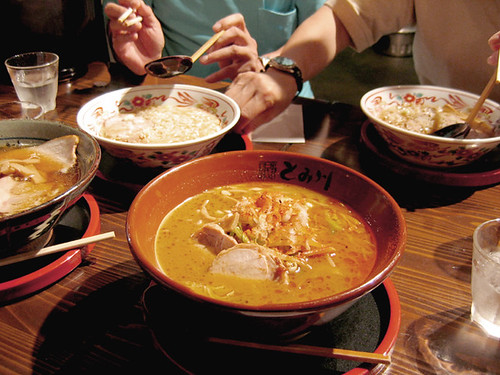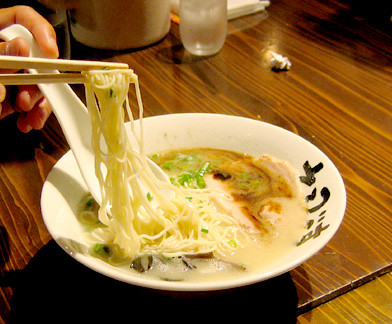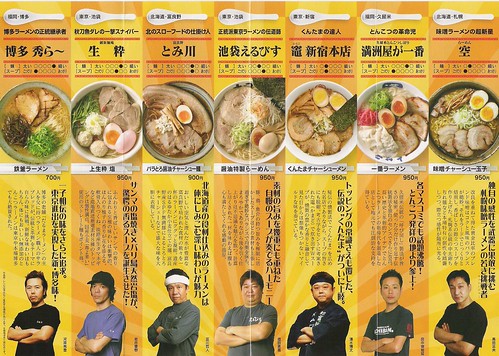These pictures really don't do the ramen justice, but it's the best I could do with the Papa Bear's automatic camera and the strange yellow lighting at the Nagoya Men-douri ramen theme park. The theme park is made to look and feel like the mid-Showa period (~50 yrs ago?), and so the entire park has that yellow, old-school light-bulb kind of lighting...

Seriously, Japanese ramen really has changed a TON in the decade I have been away from the Japanese ramen scene. I've been a big fan of ramen all my life, but my favorites were always the instant bowl kind (vs the instant cup ramen). I do remember how ramen shops were getting increasingly more popular with every short visit back to Japan - I distinctly remember one noodle shop that was so good a few years back, I had two bowls of the ramen back-to-back to the store keeper's surprise. Back then, though, it was the noodles that caught my appetite. Not until this last visit, did I get to try some of the supposedly best ramen soup - the new, powerful driving force behind the Ramen Fever in Japan.

I've been following some of the Japanese ramen blogs, comics, and essays, and here is the gist of the story. Ramen shops started out with just making a simple stock for the noodles in Post-War Japan. Back then, the seasoning was the differentiating aspect for the shops. Then, the Hakata Tonkotsu Ramen Boom happened, and all these shops with mega-rich pork broth started popping up everywhere, redefining what a ramen soup should be like. As the ramen shops learned how to make powerful broth from all sorts of animal parts, the quality of the ramen soups improved drastically and more creative efforts were put into the noodles to match the soup better. Soon, the revival of the fish stock broth as a harmonious partner to the animal broth blossomed, and ever since then, ramen in Japan has become a culinary achievement like few others - quick, delicious fast-food meals where chefs carefully construct flavors, mixing and matching ingredients, toppings, spices, noodle textures, and anything else they can possibly think of changing to improve upon their ramen.

I only had enough appetite to sample two of the six ramen shops for a total of 8 bowls of ramen - 2 main bowls and 2 half-bowls for the four of us at two shops. The two shops differed in their strengths - the first shop being more noodle-focused and the second shop being very much soup-focused. Although I always thought I was a noodle-focused kind of girl, the soup at the second shop really blew me away. It was simply divine. The complexity of the Shoyu ramen soup was amazing - rich in deep flavors with that familiar warm undertone of the Japanese favorite dashi - fish and seaweed broth. I smelled the dried fish ever so slightly while the chicken and pork added strength that dashi never had. There was no hint of oiliness or heaviness, just deep, nourishing richness of a well made animal stock. No joke, I have never had soup so perfectly delicious to my palate before.
I learned a lot from that bowl of ramen - I think my soups are going to get better now that I have a clear idea of the 'most delicious' flavor... Although it's too hot now to spend hours infront of the stove, I think this winter is going to be a soupy winter!
2 comments:
Hah, I love the hand model! ;^)
I remember going to the Ramen Museum in Yokohama and having a bowl of Sapporo miso ramen there. It tasted a little burnt, but boy was it goooood.
Post a Comment